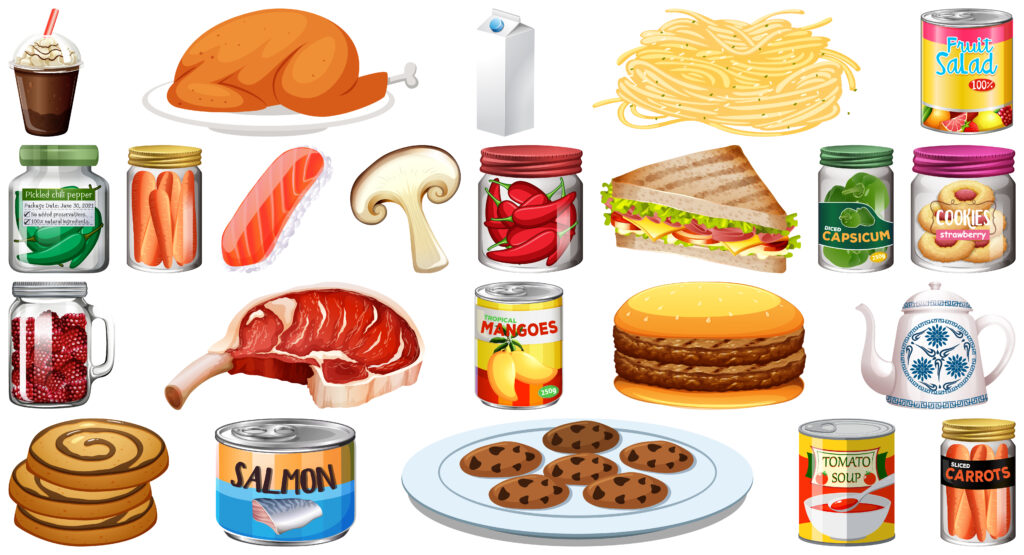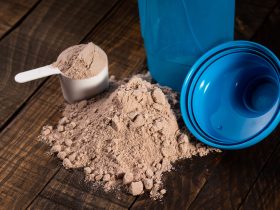
What are Processed Foods?
Food that has been baked, canned, dried, cooked, frozen, or pasteurized or has been changed in its composition by adding or deducting is processed foods. Each step during the preparation of any food is “processing” it. Hence, it depends on the kind of processes involved that determine just how processed the food is.
The foods that are minimally processed are pre-prepped for convenience. Ready-to-eat and microwaveable foods are the most heavily processed ones.
They’re quick, they’re convenient, and let’s admit it, some of them taste pretty amazing. But ever stopped to think about what’s really inside that colorful packaging? Some of these foods are nutrient powerhouses, ready to fuel our day, while others might just be party crashers to our health goals.
Come with us on a flavourful journey into the world of processed foods. We’re peeling back the labels, dishing out the good, the bad, and the tasty. Ready to become a savvy shopper? Let’s explore and munch on some knowledge!
Methods of Food Processing
1. Canning:
Canning is one of the easy and popular methods to preserve food. Food items, from fruits, nuts, vegetables, and meats, are placed in jars or cans. These containers are then heated to a specific temperature. As a result, this procedure destroys harmful bacteria and seals the container, ensuring freshness. Once sealed, the food is protected from outer contaminants and lasts longer without spoiling. Canning also allows us to enjoy seasonal foods throughout the year. While it offers comfort, storing canned goods in a cool, dry place is essential to retain their quality.
2. Fermentation:
Fermentation is a natural procedure that converts and protects food using microorganisms. Bacteria, yeast, or fungi break down food sugars, converting them into simpler compounds. As a result, products like yogurt, beer, sauerkraut, and kimchi come to life. Fermented foods not only have extraordinary tastes but also provide health advantages. They can be promising for our gut because they are rich in probiotics. Additionally, these live bacteria can improve digestion and strengthen our immune system.
3. Pasteurization:
Pasteurization is a procedure that guarantees our food is safe to consume. Harmful germs and bacteria are killed and eliminated by heating food to a precise temperature. The cycle doesn’t cook the food but maintains its natural state while making it safe.
Milk is one of the most common foods that undergo pasteurization. After pasteurization, milk remains fresh for a long period. It decreases the risk of illnesses from raw milk consumption. It’s important to note that while pasteurization kills harmful pathogens, it maintains most of the food’s nutritional value, making it safe and healthy.
4. Milling:
Milling is a process where grains are grounded. Machines or stones are used to break grains into smaller sections. It creates products like flour, meal, or grits. These milled products are then used in cooking and baking. Milling can alter the texture of foods. It can also make certain grains easier to digest. Over time, milling has become more advanced, making our food finer and more varied.
5. Blanching:
Blanching includes dipping food into steaming hot water. After a short duration, it’s quickly cooled down in cold water. This technique is used for vegetables often. It assists in preserving colour, taste, and texture. Blanching also makes it easier to peel the skin of some foods. It’s a good step before freezing vegetables because it ceases enzyme actions, which can result in loss of flavour.
6. Freezing:
Freezing is one of the finest ways to keep food fresh for longer. Food is cooled to a temperature where it becomes solid. It stops the growth of bacteria. Freezing preserves the nutrition and taste of foods. It’s one of the most common ways to store food at home. Foods like fruits, vegetables, meat, and fish can be frozen. When we want to eat them, we thaw or cook them directly. Freezing delivers the convenience of having a variety of foods available anytime.
Benefits of food processing
1. Reduces the number of harmful bacteria in food that can cause diseases
Think about enjoying your favourite snack. It’s a good feeling, right? That’s because of food processing. Food processing makes our food safer. It reduces harmful bacteria in the food. These bacteria can make us sick. Because of food processing, we don’t have to worry as much. So, when you eat, you can feel confident. It’s safer to take that bite!
2. Improves shelf life of food products
Do you notice your food spoiling quickly? It is where food processing helps and It makes food last longer. It means wastage is less. You can eat it over more days. You don’t need to rush to eat it before it goes bad. Food processing lets you relax about expiration dates.
3. Reduces health inequalities and major health concerns
Health problems can be scary. Some people can’t easily get healthy food. Food processing can help. It makes good food available to more people. It signifies more people can eat healthily. It’s a step towards a better and healthier community. We all deserve good health. So, thank you for food processing!
4. Easy to get
Have you wanted a special food but couldn’t find the ingredients? Sometimes, they are rare or not in season. Processed foods can help with this. They are always in stores. You can buy them anytime and you can have that dish or snack you want. You don’t have to wait for cravings.
5. Saves time
We’re all busy these days. Making meals can take a lot of time. Food processing helps with this. It gives us food that’s quick to make or already prepared. This means less time cooking. You can enjoy tasty meals faster. When you choose processed food, think of its advantages. It can be safe, good for health, and easy. Processed food can make eating simpler and better.
6. Provide important nutrients
When we think about food processing, it’s not just about making food look or taste better. It’s also about nutrition! Did you know? Many food processing methods can enhance the nutrient content of foods. For instance, some processed food also comes with essential vitamins and minerals. That means every bite you take comes with more goodness!
7. Availability of products throughout the year
Imagine craving a bowl of strawberry ice cream in December or wanting a pumpkin pie in June. Sounds impossible, right? Wrong! Food processing allows us to enjoy our favourite foods regardless of the season. By preserving foods at their peak freshness, food processing ensures we have a consistent supply of diverse foods all year round. So, go ahead, have that summer fruit in winter!
8. Packaging and preservation techniques
Have you ever wondered how that can of green beans in your pantry maintains its nutrition after months? It’s the magic of food processing! Advanced packaging and preservation techniques lock in the flavour and ensure the food’s nutritional quality remains intact. So, the next time you pop open a can or a packet, rest assured that it’s not just tasty but nutritious.
9. Prevents spoilage of foodstuff
No one likes to discover a mouldy piece of fruit or bread. Luckily, food processing has our backs! Techniques like canning, freezing, and drying help prevent spoilage, therefore ensuring our food remains safe for longer. It means less waste and more delicious meals for everyone. It’s a win-win!
The Bottom Line
Processed foods often have a negative image, however, they offer many advantages. They can increase nutrition and make seasonal foods available year-round. They use advanced packaging to keep food fresh longer. Therefore, when you have a snack or meal, appreciate food processing for improving our food variety and quality. It’s more than just convenience; it’s also about taste and health. Enjoy your meal!
